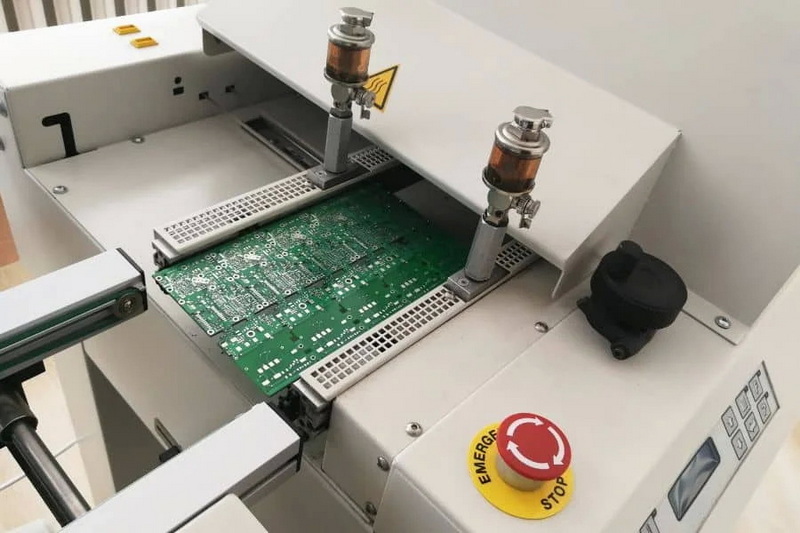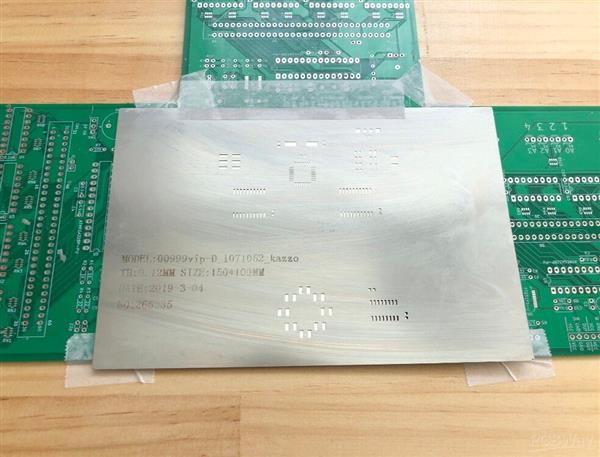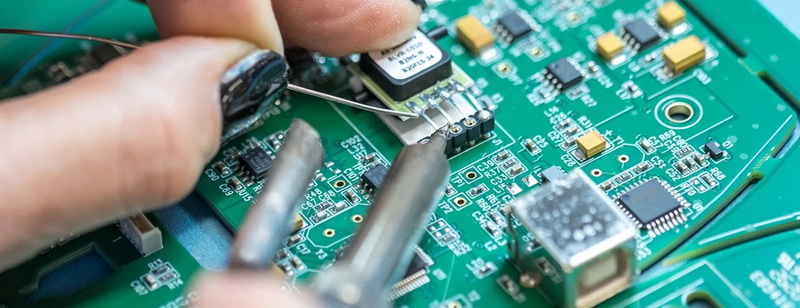Content Menu
● Understanding the Wholesale PCB SMT Solution Line
● Major Cost Components of Implementing a Wholesale PCB SMT Line
>> 1. Equipment Purchase and Setup Costs
>> 2. Material and Component Costs
>> 3. Labor and Training Costs
>> 4. Facility and Utility Costs
>> 5. Maintenance and Software Costs
● Factors Influencing the Cost of a Wholesale PCB SMT Solution Line
>> PCB Design Complexity
>> Production Volume and Economies of Scale
>> Flexibility and Scalability
>> Quality Control and Yield
● Benefits Offsetting the Costs of Implementing a Wholesale PCB SMT Line
● Strategies for Managing and Reducing Costs
● Conclusion
● FAQ
>> 1. What is the typical cost range for setting up a wholesale PCB SMT solution line?
>> 2. How does PCB design complexity affect SMT line costs?
>> 3. Can automation in a wholesale SMT line reduce labor costs?
>> 4. What are the ongoing operational costs besides labor and materials?
>> 5. How can manufacturers optimize costs when implementing a wholesale PCB SMT line?
Implementing a wholesale PCB SMT solution line is a strategic decision that can significantly impact the cost structure and operational efficiency of electronics manufacturing. Surface Mount Technology (SMT) lines have become the industry standard for assembling printed circuit boards (PCBs) due to their speed, precision, and ability to handle high-density components. However, the cost implications of setting up and running such a line are multifaceted and require careful consideration. This article explores the various cost factors involved in implementing a wholesale PCB SMT solution line, including equipment, materials, labor, facility requirements, and long-term operational expenses. It also highlights the benefits that can offset these costs and provides insights into optimizing investment for maximum return.

Understanding the Wholesale PCB SMT Solution Line
A wholesale PCB SMT solution line refers to a comprehensive, often automated, assembly line designed to produce large volumes of PCBs using surface mount technology. This line typically includes several key machines and processes:
- Solder Paste Printer: Applies solder paste to the PCB pads through a stencil.
- Pick-and-Place Machine: Precisely places SMT components onto the PCB.
- Reflow Oven: Heats the board to melt the solder paste, creating permanent electrical connections.
- Inspection Systems: Automated optical inspection (AOI) and sometimes X-ray inspection to ensure quality.
- Conveyors and Buffers: Facilitate smooth workflow between machines.
- Testing Stations: Optional, for functional and in-circuit testing.
These components work together to enable high-speed, high-precision assembly of PCBs suitable for various industries, including consumer electronics, automotive, medical devices, and telecommunications.
The wholesale PCB SMT solution line is designed to handle large-scale production runs efficiently. This means that the line is optimized not only for speed but also for flexibility, allowing manufacturers to switch between different PCB designs with minimal downtime. This flexibility is crucial in today's fast-paced electronics market where product life cycles are short and customization is common.
Major Cost Components of Implementing a Wholesale PCB SMT Line
1. Equipment Purchase and Setup Costs
The initial investment in equipment is the most significant cost when implementing a wholesale PCB SMT solution line. High-quality pick-and-place machines, reflow ovens, solder paste printers, and inspection systems can range from hundreds of thousands to over a million dollars depending on capacity, automation level, and technology sophistication.
- Pick-and-Place Machines: These are the heart of the SMT line and vary widely in speed, precision, and component handling capabilities. Advanced models with multi-head placement and vision alignment systems command higher prices but offer greater efficiency. The faster the machine and the more components it can place per hour, the higher the cost, but this also translates to greater throughput.
- Reflow Ovens: Essential for soldering, these ovens must have precise temperature control and multiple heating zones to accommodate various PCB sizes and component types. The quality of the reflow oven affects solder joint reliability and overall product quality.
- Inspection Equipment: Automated optical inspection systems reduce defects and rework costs but add to upfront expenses. Some manufacturers also invest in X-ray inspection systems for complex boards with hidden solder joints.
- Installation and Calibration: Professional setup, calibration, and integration of machines can add a substantial cost, ensuring optimal performance and minimal downtime. This phase is critical because poorly installed equipment can cause production delays and quality issues.
Facility preparation, including cleanrooms, adequate ventilation, and safety systems, also contributes to setup costs. The environment must meet specific standards to prevent contamination and ensure consistent quality.
2. Material and Component Costs
The wholesale PCB SMT line requires a steady supply of raw materials:
- PCB Substrates: Costs vary based on material type (e.g., FR-4, aluminum), thickness, copper weight, and surface finish. Higher-specification boards designed for high-frequency or high-reliability applications cost more.
- Electronic Components: The Bill of Materials (BOM) heavily influences cost, with active components like integrated circuits (ICs) being more expensive than passive ones such as resistors and capacitors. Component availability and lead times can also affect cost and production schedules.
- Consumables: Solder paste, flux, cleaning solvents, and stencils are recurring costs that must be factored into operational budgets. The quality of solder paste affects solder joint strength and defect rates.
Strategic sourcing and bulk purchasing can reduce per-unit material costs, especially in high-volume production. Establishing strong relationships with suppliers can also help secure better pricing and priority access to components.
3. Labor and Training Costs
While SMT lines are highly automated, skilled labor is essential for operation, maintenance, programming, and quality control.
- Technicians and Engineers: Hiring experienced personnel ensures smooth operation and quick troubleshooting. These experts program pick-and-place machines, maintain equipment, and manage quality assurance processes.
- Training: Operators must be trained to handle sophisticated machines and adhere to quality standards, which involves upfront and ongoing expenses. Continuous training is necessary to keep up with technological advancements and process improvements.
Automation reduces manual labor costs but does not eliminate the need for human oversight. The complexity of SMT lines means that human expertise remains critical for maintaining high yield and minimizing downtime.
4. Facility and Utility Costs
Operating a wholesale SMT line requires a suitable facility with controlled environmental conditions to maintain quality and reliability.
- Space: The size and location of the facility affect rental or purchase costs. SMT lines require clean, organized spaces with room for equipment, materials storage, and quality control areas.
- Utilities: Energy consumption for machines, lighting, and climate control can be significant, especially in high-volume operations. Maintaining temperature and humidity within strict limits is necessary to prevent defects.
Investment in facility infrastructure such as anti-static flooring, proper ventilation, and dust control systems also impacts costs but is essential for protecting sensitive electronic components.
5. Maintenance and Software Costs
Regular maintenance is critical to avoid downtime and maintain quality.
- Routine Maintenance: Includes calibration, cleaning, and part replacement. Preventive maintenance programs help extend equipment life and reduce unexpected failures.
- Software: SMT lines rely on sophisticated software for machine control and programming, which may require licenses and updates. Software integration with enterprise resource planning (ERP) systems can improve production planning and traceability but adds to costs.
Upgrading software and hardware periodically to keep pace with technological advances is another ongoing expense.

Factors Influencing the Cost of a Wholesale PCB SMT Solution Line
PCB Design Complexity
More complex PCBs with multiple layers, high component density, and small component sizes increase assembly difficulty and cost. Complex designs require advanced machinery and more precise programming, which can slow production and raise expenses. For example, boards with fine-pitch components or mixed technology (SMT and through-hole) require specialized equipment and handling.
Production Volume and Economies of Scale
Higher production volumes spread fixed costs over more units, reducing the cost per board. Wholesale SMT lines are most cost-effective for large-scale manufacturing, where automation and bulk purchasing yield significant savings. Small batch or prototype runs may not justify the high capital investment unless the line can be flexibly adapted.
Flexibility and Scalability
Wholesale SMT lines designed for flexibility can handle various PCB sizes and component types, but this versatility may increase initial costs. However, the ability to scale production up or down quickly can improve long-term cost efficiency. Modular line designs allow manufacturers to add or remove equipment as needed.
Quality Control and Yield
Investing in inspection and testing equipment reduces defects and rework, which lowers overall production costs despite higher upfront expenses. High yield rates mean fewer wasted materials and less labor spent on troubleshooting and repairs.
Benefits Offsetting the Costs of Implementing a Wholesale PCB SMT Line
- Increased Production Speed and Efficiency: Automation enables rapid, continuous production, meeting tight deadlines and high demand. This speed can be a decisive competitive advantage.
- Improved Quality and Reliability: Precision placement and real-time inspection reduce defects, resulting in higher customer satisfaction and fewer returns.
- Reduced Labor Costs: Automation minimizes manual intervention, lowering labor expenses and reducing human error.
- Space Optimization: Smaller SMT components allow for compact PCB designs and efficient use of factory floor space.
- Environmental Benefits: Reduced material waste and energy-efficient machines contribute to sustainability goals.
- Enhanced Supply Chain Control: In-house production reduces dependency on external suppliers, improving inventory and schedule management.
These benefits often justify the initial investment by enabling manufacturers to meet market demands more effectively and maintain profitability.
Strategies for Managing and Reducing Costs
- Careful Equipment Selection: Choose machines that balance cost with required capabilities. Avoid over-investing in features that are not necessary for your production needs.
- Optimize PCB Design: Simplify designs where possible to reduce assembly complexity and improve yields.
- Bulk Purchasing: Leverage volume discounts for components and materials to reduce per-unit costs.
- Invest in Training: Skilled operators reduce errors and downtime, improving overall efficiency.
- Implement Preventive Maintenance: Avoid costly repairs and production halts by regularly servicing equipment.
- Utilize Data Analytics: Monitor production to identify inefficiencies and optimize processes. Data-driven decisions can improve throughput and reduce waste.
Conclusion
Implementing a wholesale PCB SMT solution line involves substantial initial investment and ongoing operational costs. These costs encompass equipment purchase and setup, materials, labor, facility requirements, maintenance, and software. However, the long-term benefits-such as increased production speed, improved quality, labor savings, and enhanced flexibility-can lead to significant cost savings and competitive advantages. Careful planning, strategic sourcing, and continuous optimization are essential to maximize the return on investment. For manufacturers aiming to scale up production and meet the demands of modern electronics markets, a wholesale PCB SMT line represents a vital asset that balances cost with efficiency and quality.

FAQ
1. What is the typical cost range for setting up a wholesale PCB SMT solution line?
The cost can vary widely depending on the scale and sophistication but generally ranges from several hundred thousand to over a million dollars. This includes equipment, facility preparation, installation, and initial training.
2. How does PCB design complexity affect SMT line costs?
More complex PCB designs with multiple layers, high component density, and small components require advanced machinery and longer setup times, increasing both capital and operational costs.
3. Can automation in a wholesale SMT line reduce labor costs?
Yes, automation significantly reduces manual labor requirements, lowering labor costs and minimizing human errors, though skilled operators are still necessary for oversight and maintenance.
4. What are the ongoing operational costs besides labor and materials?
Ongoing costs include equipment maintenance, software licenses and updates, utilities such as electricity and climate control, and consumables like solder paste and cleaning agents.
5. How can manufacturers optimize costs when implementing a wholesale PCB SMT line?
Manufacturers can optimize costs by selecting appropriate equipment, simplifying PCB designs, leveraging economies of scale through bulk purchasing, investing in operator training, and employing preventive maintenance and data-driven process improvements.




















